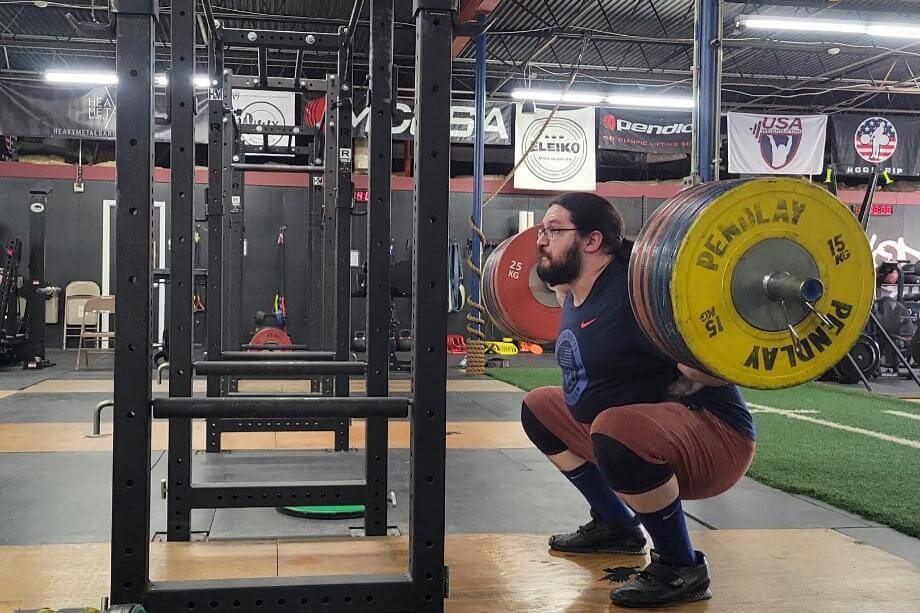We test and review fitness products based on an independent, multi-point methodology. If you use our links to purchase something, we may earn a commission. Read our disclosures.
As an Olympian in the sport of weightlifting, I’ve trained tons (literally) of squats. Not only are they a vital part of the two lifts I compete in—the snatch and the clean and jerk—but they also are foundational in leg strength. On top of that, continued squat training helped keep me healthy throughout my career, having healthy joints even when I was hoisting over 500 pounds over my head.
The benefits of squats are many, and they go beyond just getting stronger. Many of these benefits carry over into a better quality of life outside of the gym. Let’s take a look at some of the health benefits of squats.
1. Build Leg Muscles
Squats are one of the best exercises for building muscle and lower body strength. Whenever we do resistance training, we work muscles against a force—weight, in the case of a barbell squat. By forcing the legs to work, we promote muscular adaptation in the hamstrings, glutes, and quadriceps, leading to stronger, larger muscle tissue in these muscle groups. Regardless of your goals, squat exercises lead to more muscle mass, which in turn leads to more strength gains.
2. Build Core Strength
Aside from building strong leg muscles, squats are a great tool for strengthening your core. Squatting is typically considered a leg exercise, but it also engages a lot of the lower back, obliques, and other abdominal muscles to stabilize and maintain good positions throughout the movement.
A 2018 study1 found that high-intensity squats proved to engage the core more than a prone bridge or plank hold, particularly in the erector spinae. A strong core is vital to most activities in your day, from simply picking an item up to athletic hobbies.
3. Reduce Risk of Injury
Weightlifters squat not just as a muscle-building exercise, but also as a means to help prevent injury. With proper form, squats will strengthen muscles and joints, helping reduce your chance of injury both in and out of the gym. Resistance training programs have been shown to reduce the risk of injury in adolescent athletes, according to this 2020 study2. If you can’t find an in-person trainer, remember that there are plenty of personal training apps for you to choose from.
Weight training, including squatting, gets a bad reputation due to a couple of outdated studies; it is actually a great way to reduce your risk of injury.
4. Provides Versatility
A basic squat can be done almost anywhere with almost anything. You can use more than just a barbell for your squats: dumbbells, kettlebells, resistance bands or medicine balls also work great as weight resistance options. Don’t have any free weights? That’s fine; you can do bodyweight squats and still burn the quads and glutes.
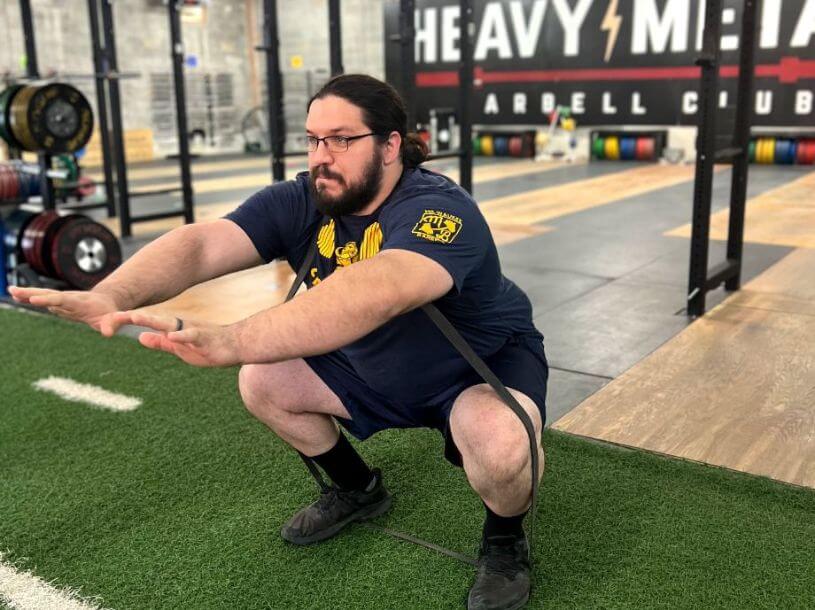
Beyond that, we can also vary the load and repetitions to achieve different results. Heavier weights in lower repetitions—typically up to five reps—will build overall strength in the lower body, while higher repetitions with lighter weights will promote muscle growth as well provide a cardio workout. The squat can be adjusted and modified to any workout routine to better achieve your fitness goals.
5. Improve Your Mobility
Performing the full range of motion for a squat will improve your mobility simply through repetition. Training a squat with free weights helps strengthen your joints through multiple planes of motion, as well as stretching tendons, ligaments, and muscles through the ends of the movement. Stronger and more flexible joints lead to more mobile joints.
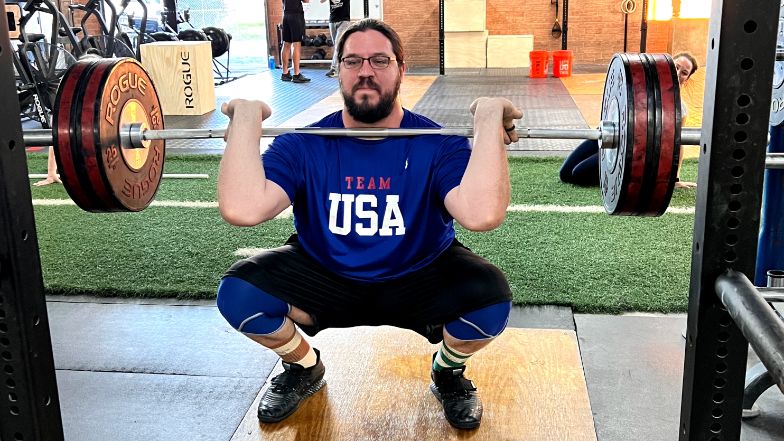
Squats are a functional exercise, meaning the movement will carry over into common everyday life. Being more mobile in a squat and working the entire movement will make you more mobile and able in everyday tasks, too!
6. Burns Calories
A study from May 20223 demonstrated that dieting was shown to be more effective when paired with weight training, especially if the goal was to lose fat and maintain muscle mass. In addition, a compound exercise like a squat recruits many muscle groups at once, burning more calories than an isolated movement, like a calf raise. People with more muscle will burn more calories throughout the day, so if fat or weight loss is your goal, it’s important to lift weights and squat.
7. Increase Power
Squats build explosive strength as well as raw strength. Explosive strength, or power, is how quickly and efficiently a muscle or muscle group can change direction. An easy measurement of power in the lower body muscles is a vertical jump. A 2013 study4 found that squats helped improve the vertical jump of younger athletes, in addition to building lean muscle and stronger knee extensors. A stronger squat leads to more power, which athletes will want for a higher vertical jump height or a faster sprint.
8. Sprint Faster
Speaking of sprinting, there was also a study from January 20085 that showed that heavy back and front squats performed before a sprint improved performance among athletes. Squats work the leg muscles needed to develop power, but also can have a positive impact when used as a warmup for a power exercise, like sprints.
9. Create Stronger Joints
With squats being functional and typically done with free weights, you are moving your muscles and joints through multiple planes of motion. We aren’t only strengthening the movement up and down, but the joints have to stabilize forward and back and side to side as well. With a consistent exercise routine consisting of squats, we are slowly building up and strengthening the tendons and ligaments in our knee joints, ankles, and hips. A strong joint reduces your risk of injury, and also helps increase your mobility, and strength in more difficult positions.
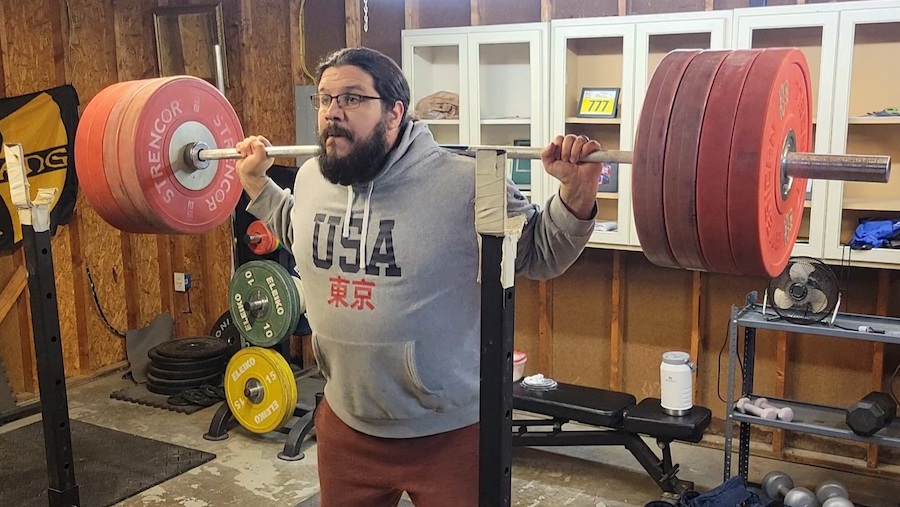
10. Boost Hormone Production Naturally
One major health benefit of squats has to do with hormone production. Hormones are vital for regulating bodily functions, from blood pressure and metabolism, all the way to muscle growth and strength. Barbell squats have been shown to improve our natural hormone production, most notably testosterone and growth hormone, according to this study from October 2018.6 These hormones are important in increasing lean mass and bone density, along with burning fat. While why this happens isn’t quite clear yet, many theorize it is a reaction to the stress of demanding forces like free weight training.
11. Improve Posture
As said before, a squat can help strengthen your core. A stronger core will allow you to have better posture throughout the day, and better posture can help with nagging pains, like lower back pain for example. In addition to a strong core, a back squat requires a solid upper body to hold and support weight. Keeping your shoulders back and chest up helps emulate good posture in the movement, which we can replicate in daily living.
12. Increase Bone Density
Bone density is important to maintain as we age. The stress of heavy loads help us maintain and even improve the density of our bones. A 2013 study7 showed that women with osteoporosis who did heavy strength training showed significant improvement in their bone mass and density in a 12-week period. Stronger bones further reduce our risk of injury, making squats an effective exercise to use.
13. Train Imbalances
Some variations of squats, like split squats, are unilateral movements, meaning they work one side of the body at a time. Unilateral movements are a great way to train muscular imbalances. For example, if one hamstring is weaker than the other, you can isolate that hamstring with unilateral training: something like lunges or split squats. Training imbalances can help you become stronger and also help avoid injury down the road.
Who Should Squat?
Pretty much everyone can, and should, squat!
Okay, now that I’ve said that, let me clarify: Everyone starts their fitness journey at different places, so while squats are a great tool for everyone, they can also be a challenging movement to someone new to strength training.
If you are beginning to learn how to squat, emphasize proper squat form first. If you are having difficulty performing a full squat, you might have to start with a squat progression, like a box squat. Lastly, it might be a good idea to find a certified personal trainer, or CPT, to help you begin your fitness journey.
RELATED: Proper Squat Form: Tips From An Olympian
How to Squat
While a squat looks simple enough, there are a lot of technical aspects and things to think about. Here is a crash course on how to squat:
- Your starting position should have your feet stance at or just outside of shoulder-width, with the core engaged and braced, and chest up. Your toes are typically slightly pointed out, and your weight should be distributed even across both feet.
- Begin to lower yourself into the squat by shifting the hips back, then letting the knees bend and push out slightly, tracking over the feet and toes. Keep the chest up as you lower yourself.
- Go as low as you can. As a coach, I try to get my athletes to have the hip crease below the knees, or “below parallel.” This may be a depth you have to train towards, but we want as low as we can while still maintaining a tight core and strong, braced upper body.
- Press into the floor with the heels to begin squatting back up, firing with the glutes to ensure your hips stay under you and the chest remains upright.
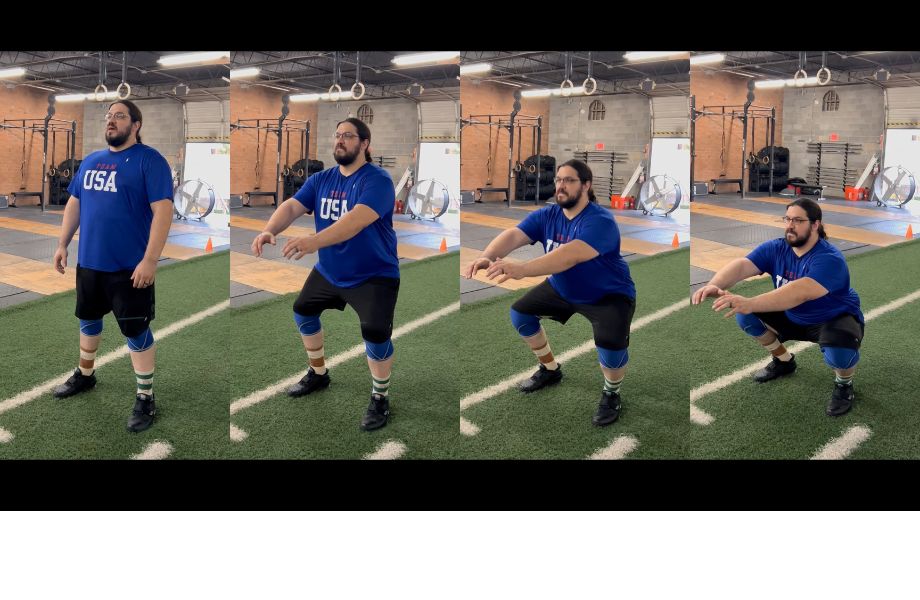
Squat Variations
Squats are very versatile and can be done in a variety of ways. Here are some of the more common variations of squats.
Barbell Squats
These squats are all done with a barbell, as the name suggests. Most of these are done with an Olympic barbell, although there are some specialty bars that can be used as well. One other variation is where the bar is in relation to the lifter.
- Back squat: These are the most common barbell squats, and probably the one that most people are familiar with. The bar sits along the back of the shoulders, just underneath the nape of the neck. Other than being done with a loaded barbell, these squats are performed similarly to a bodyweight squat.
- Front squat: A front squat is done with the barbell racked at the front of the shoulders, with the arms underneath the bar, the elbows whipped upward in front. The forward shift of our center of gravity makes it important to remain upright and tight with the upper back and core.
- Overhead squat: These squats are often considered more of a core exercise than a leg exercise. In an overhead squat, the bar is pressed overhead with a wide grip, and the athlete balances the barbell overhead as they squat down and up. This is a challenge of core stability and shoulder mobility like no other.
- Safety bar squat: This is done with a special bar with two handles protruding from the front of the bar to grip and is helpful to anyone with an arm injury, or with poor mobility who would be unable to reach a normal barbell placed on the back. Although it is placed on the back like a back squat, the design of the safety squat bar shifts the weight forward slightly, to somewhere in between a back and front squat.
Tempo & Pause Squats
These types of squats deal with changing the timing of the squat movement.
- Tempo squat: A tempo squat is done by slowing down the eccentric or concentric movement of the squat. Typically more done with the eccentric, or downwards, movement, a tempo squat will try to slow the movement down to a 3- to 5-second count. This is to increase time under tension, and strengthen muscles with less weight. They can also be good for building tendon and ligament strength.
- Pause squat: Pauses are added to squats also to increase time under tension, but also to make the lifter drive from the bottom of a squat from a dead stop, instead of building momentum from a rebound. It is done simply by squatting down and pausing at the bottom of a squat for a specified amount of time, then firing up as explosively as possible. This is great for developing power out of a dead stop and is used by lots of weightlifters.
Goblet & Dumbbell Squats
Goblet squats and dumbbell squats are simply squats done with a kettlebell or dumbbell, respectively. A goblet squat holds the kettlebell out in front at the chest, usually upside down, and dumbbells can be held at your side, or up at the shoulders. Dumbbells and kettlebells can be great alternatives for barbell squats to lighten the load for workouts with higher repetitions.
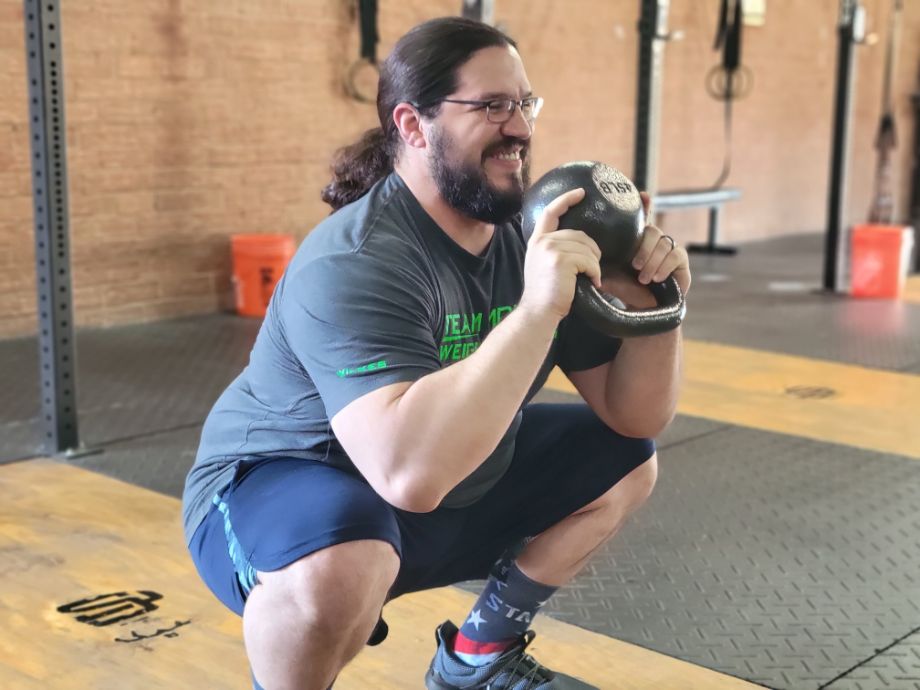
Split Squats
A split squat is a great way to train unilateral movement in a squat. This is performed with one leg back and raised on a bench, while the other leg performs a squat. The raised leg cannot help during the movement, essentially making this exercise a one-legged squat. This will attack the glutes and help train imbalances that a normal squat may not address.
Benefits of Squats: Final Thoughts
Squats are a versatile tool in any person’s workout program. They have many benefits that can lead to a stronger you in the gym, and a better quality of life outside of the gym. If you haven’t yet, go out and give this strength exercise a try.
Benefits of Squats: Q&A
How many squats a day is good?
It’s always good to vary your workout routine, and this number will depend on what your individual goals are, but I would recommend three sets of between 8 to 12 repetitions as a good starting point for building and toning muscle. Add a couple more sets with fewer reps to build more strength.
Do squats reduce your waistline?
Squats can help build muscle and strengthen the core, and they will help you lose fat by burning calories. However, squats and weight training does not reduce fat in specific areas. Spot reduction is a myth. Although squats will help you lose fat and build muscle, there is no proven way for them to attack fat in a specific area of the body, like belly fat on the waistline.
How many squats before you see results?
With smart, consistent squat training of two or three sessions a week, you can probably notice progress in as little as four or six weeks. Don’t be discouraged if the numbers aren’t climbing though; everyone is different. There are also other ways to note progress: weight loss and improved technique, for example.
References
- van den Tillaar R, Saeterbakken AH. Comparison of Core Muscle Activation between a Prone Bridge and 6-RM Back Squats. J Hum Kinet. 2018 Jun 13;62:43-53. doi: 10.1515/hukin-2017-0176. PMID: 29922376; PMCID: PMC6006542.
- McQuilliam SJ, Clark DR, Erskine RM, Brownlee TE. Free-Weight Resistance Training in Youth Athletes: A Narrative Review. Sports Med. 2020 Sep;50(9):1567-1580. doi: 10.1007/s40279-020-01307-7. PMID: 32578028; PMCID: PMC7441088.
- Lopez P, Taaffe DR, Galvão DA, Newton RU, Nonemacher ER, Wendt VM, Bassanesi RN, Turella DJP, Rech A. Resistance training effectiveness on body composition and body weight outcomes in individuals with overweight and obesity across the lifespan: A systematic review and meta-analysis. Obes Rev. 2022 May;23(5):e13428. doi: 10.1111/obr.13428. Epub 2022 Feb 21. PMID: 35191588; PMCID: PMC9285060.
- Takai Y, Fukunaga Y, Fujita E, Mori H, Yoshimoto T, Yamamoto M, Kanehisa H. Effects of body mass-based squat training in adolescent boys. J Sports Sci Med. 2013 Mar 1;12(1):60-5. PMID: 24149726; PMCID: PMC3761779.
- Yetter, Mike; Moir, Gavin L. The Acute Effects of Heavy Back and Front Squats on Speed during Forty-Meter Sprint Trials. Journal of Strength and Conditioning Research 22(1):p 159-165, January 2008. | DOI: 10.1519/JSC.0b013e31815f958d
- Wilk M, Petr M, Krzysztofik M, Zajac A, Stastny P. Endocrine response to high intensity barbell squats performed with constant movement tempo and variable training volume. Neuro Endocrinol Lett. 2018 Oct;39(4):342-348. PMID: 30531700.
- Mosti MP, Kaehler N, Stunes AK, Hoff J, Syversen U. Maximal strength training in postmenopausal women with osteoporosis or osteopenia. J Strength Cond Res. 2013 Oct;27(10):2879-86. doi: 10.1519/JSC.0b013e318280d4e2. PMID: 23287836.
Further reading

These challenging sprint workouts are built to help you gain speed and power, and can be done just about anywhere. Read more

If you’re shopping rack systems, you might be looking for the best Stray Dog Strength coupon code. We have that as well as other ways to save. Read more

We’ve rounded up some of the best military discounts on home gym equipment so you can quickly find ways to save. Read more

Barbell curls aren’t the only way to grow your biceps, as proven in our bodyweight bicep workout guide. No weights or gym required. Read more

